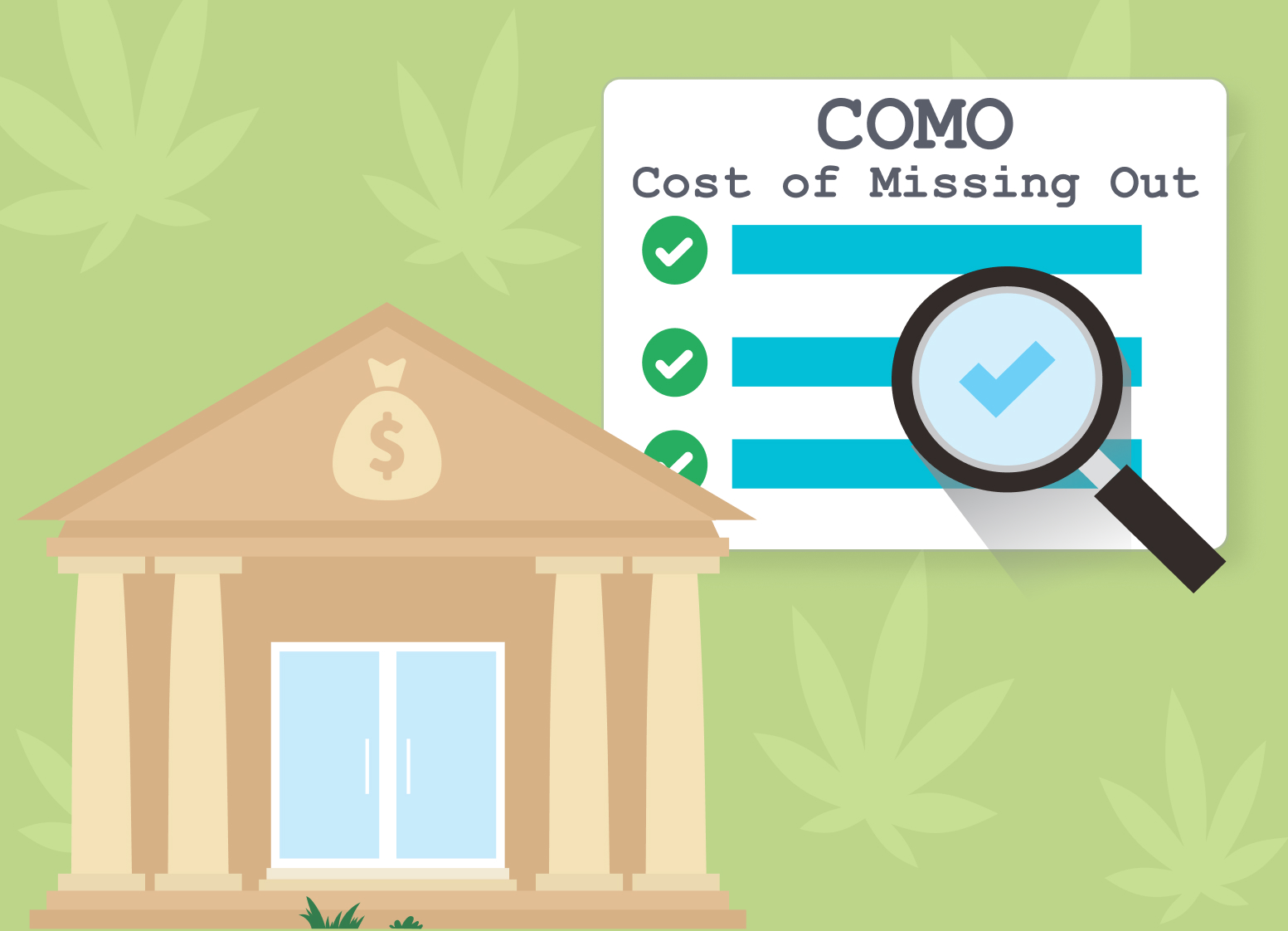The Cost to Your Bank or Credit Union When You Say “No” to Cannabis Banking

This is the second part of a three-part series on the community, opportunity, and economic costs when financial institutions say “no” to cannabis.
On its face, the decision you’ve made against cannabis banking is rational, supported by sound principles of risk management. Taking on cannabis banking and handling dispensary proceeds means accepting the risk that Federal enforcement of Federal prohibitions could harm your bank or credit union. Since the legal frameworks in this area are still evolving, a majority of financial institutions have chosen risk avoidance as their default setting.
Yet – no differently from the loans you make or other types of accounts you accept – there are also good arguments in favor of taking on higher-risk activities, so long as you price for them accordingly. Early adopters have proven that the cannabis industry is willing and able to tolerate higher price points in exchange for the safety and convenience of getting traditional banking services from established providers. According to FinCEN’s most recent report, 723 institutions had filed marijuana-related Suspicious Activity Reports through the reporting period that ended June 30, 2019. Divided among 563 banks and 160credit unions, this means that more than 10% of banks and almost 5% of credit unions by number had engaged in some form of cannabis banking.
Why have so many institutions opted in and accepted the risks of banking CRBs? As with most things in financial services, it comes down to money.
Dollars and Sense
When you avoid cannabis banking, you’re donating your share of the potential market to your competitors who decide in favor of accepting and managing these risks. Your avoidance means forfeiting both short-term and long-term opportunities to generate fee income, and giving others a head start on future business opportunities.
- Cost of lost fee income. In established markets like Colorado, tales are abundant of early entrant FIs seeing their fee income increase 10x over pre-cannabis-banking levels. It is not uncommon to hear of even small FIs generating multimillion-dollar annual fee income from CRB accounts. In less-established markets, accounts yield monthly fees based on average deposit balances. For example, when the first Boston bank entered this line of business after adult-use was legalized in Massachusetts, its fees started at $5,000 per month. Banking “access” fees are common, and may be inclusive of, or in addition to, transactional or volume-based activity surcharges. For example, some institutions price their oversight on an activity-by-activity basis, charging extra for things like verification of deposits, conducting periodic site visits, and account oversight reviews. Others levy transaction charges based on dollars handled or numbers of deposits and withdrawals. Your local markets might tolerate less or more cost structure than these examples illustrate. One certainty is this: you are sure to generate zero fee income from the cannabis banking market, if you are not in it.
- Cost of missing out. Just like its social media counterpart FOMO (fear of missing out), COMO is real. If 5-10% of your competition is already banking CRBs, imagine what happens as the next 10% step in. And then the next 10%. Before the real race has even begun, you’ve ceded some portion of the addressable market simply by not being present in the market today. Waiting until Federal prohibitions are fully repealed, while “safe” from a legal standpoint, is anything but from a competitive or strategic view. Do you think that those institutions who have already gotten a years-long head start into the cannabis banking space are going to slow down their efforts once Federal prohibitions are removed? More likely, they will go pedal-to-the-metal on marketing, and cite their experience as a rationale for choosing their institution. Which also means those institutions will likely be first-to-market (again) when Federal legalization means other banking services such as loans can be offered to CRBs. Your delay will cost you real dollars and you will have to spend more to be a successful disruptor/newcomer versus enjoying lower customer acquisition costs earlier in the business cycle.
Deciding whether your bank or credit union is ready, willing and able to accept the responsibilities of banking cannabis-related businesses requires much deliberation. When adding up the costs, don’t forget to factor in that risk avoidance also comes at a price.
Next up: The cost to society, as well as U.S. economic interests, when you say “no”
If you’re curious about how other banks and credit unions are successfully banking CRBs today, contact us to learn more about your options and how we can help.